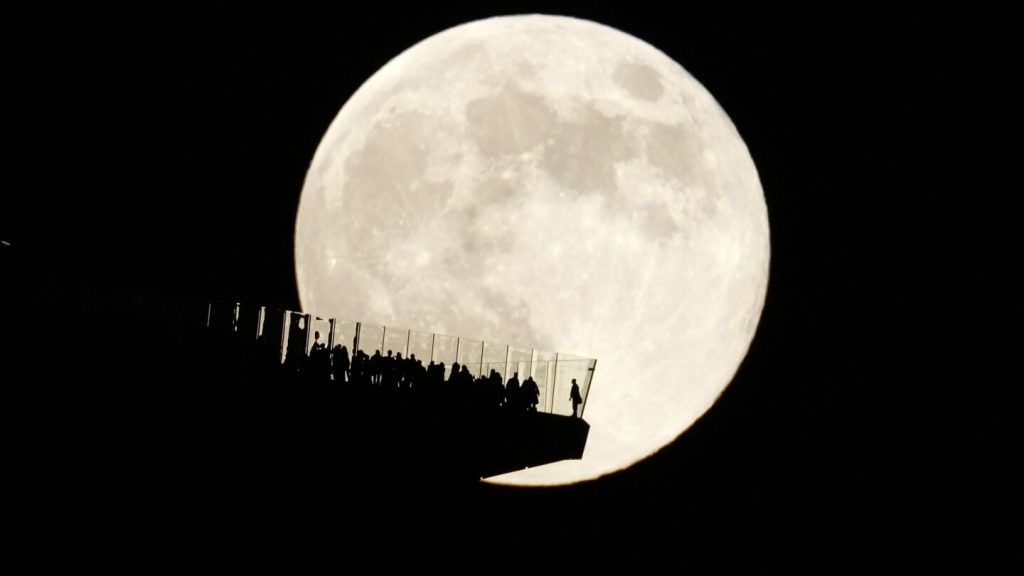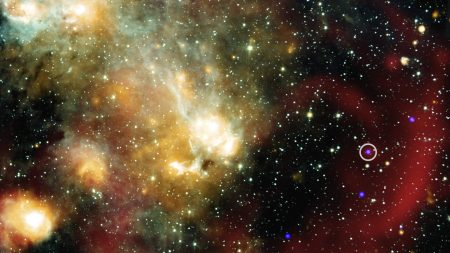The year 2025 promises a celestial spectacle, brimming with astronomical events that will captivate skywatchers around the globe. While a total solar eclipse, like the one that enthralled North America in 2024, won’t grace our skies until 2026, the cosmos has prepared a dazzling array of alternative displays, from lunar eclipses and supermoons to planetary parades and vibrant auroras.
The year kicks off with a remarkable planetary alignment. In mid-January, six planets – Mercury, Venus, Mars, Jupiter, Saturn, and Uranus – will arrange themselves in a graceful arc across the evening sky, a sight readily visible to the naked eye, weather permitting. This celestial procession will continue for several weeks, with some planets appearing to draw closer to one another. By late February, Mercury will join the gathering, completing a seven-planet lineup. These planetary companions will gradually depart the celestial stage throughout the spring.
The moon will take center stage on two occasions in 2025, offering a pair of total lunar eclipses. The first, on March 14th, will cloak the moon in Earth’s shadow for over an hour, visible across North and South America. A second total lunar eclipse, even longer in duration, will grace the skies on September 8th, visible across Europe, Asia, Africa, and Australia. These lunar eclipses will be accompanied by partial solar eclipses two weeks after each total lunar eclipse. The first partial solar eclipse, on March 29th, will be visible from parts of North America, Greenland, Europe, Siberia, and northwestern Africa. The second, on September 21st, will be visible near the bottom of the world.
Supermoons, those full moons that appear larger and brighter due to their closer proximity to Earth, will also make a grand entrance in 2025. Three supermoons are scheduled to appear in October, November, and December, with the November supermoon making the closest approach to Earth, at a distance of 221,817 miles (356,980 kilometers). These supermoons will offer stunning views of our celestial neighbor, appearing significantly larger and brighter than usual full moons.
The sun, currently at its solar maximum within its 11-year cycle, is expected to continue its heightened activity throughout 2025. This increased solar activity translates into a greater likelihood of geomagnetic storms, which in turn paint the skies with breathtaking auroras, both the Northern and Southern Lights. Space weather forecasters anticipate more frequent and intense auroral displays, urging skywatchers to stay informed about space weather updates to avoid missing these spectacular light shows.
Meteor showers, those celestial fireworks displays created by Earth passing through debris trails left by comets and asteroids, will also punctuate the 2025 night sky. The Perseids, peaking in August, and the Geminids, peaking in December, are traditionally the most prolific and well-known meteor showers. However, several other showers, like the Lyrids in April, the Orionids in October, and the Leonids in November, offer opportunities to witness these fleeting celestial streaks. Optimizing viewing conditions involves seeking dark locations with minimal moonlight, allowing these ephemeral sparks to shine against the backdrop of a darkened sky.
In summary, 2025 presents a celestial calendar brimming with captivating astronomical phenomena. From planetary alignments and lunar eclipses to supermoons and vibrant auroras, the cosmos offers a diverse array of spectacular events for both seasoned astronomers and casual stargazers. By keeping abreast of space weather forecasts and celestial event schedules, skywatchers can prepare to witness these cosmic wonders and appreciate the dynamic beauty of our universe. So, mark your calendars, find a dark spot under the open sky, and prepare to be amazed by the celestial show that 2025 has to offer.










